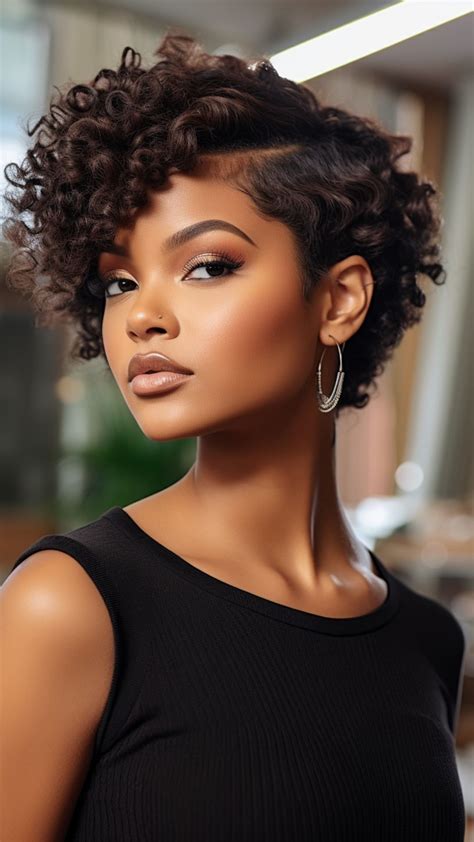Introduction
Natural hair has taken center stage in the beauty industry, with more and more women embracing their curls, coils, and kinks. A haircut designed specifically for natural hair can enhance your unique texture and help you achieve your desired style.

Types of Natural Hair Cuts
There’s an array of natural hair cuts available, each tailored to suit different hair types and preferences:
-
Textured Pixie: A short and sassy cut that adds volume and definition to fine or thin natural hair.
-
Undercut Fade: A trendy option that involves shaving the sides and back of the head, while leaving the top slightly longer. This can create a striking contrast and emphasize the texture of your curls.
-
Tapered Bob: A classic bob haircut with a slight taper at the back, creating a more flattering shape for natural hair that tends to be thicker at the ends.
-
Asymmetrical Lob: A versatile cut that features one side longer than the other, adding an edgy and modern touch to your natural curls.
-
Long Layers: Layers can help to reduce bulk and enhance movement in thick natural hair. They can be added to any length, from shoulder length to waist length.
Benefits of a Natural Hair Cut
A haircut tailored to natural hair offers numerous benefits:
-
Enhances Texture and Definition: A well-cut natural hair style can help to define and enhance the unique texture of your curls or coils, creating a voluminous and bouncy look.
-
Reduces Breakage and Tangling: Regular trims remove split ends and prevent tangles, which can damage natural hair and lead to breakage.
-
Promotes Healthy Hair Growth: A healthy hair cut encourages healthy hair growth by stimulating blood circulation and removing damaged strands.
-
Boosts Confidence: Embracing your natural hair with a flattering haircut can boost your confidence and make you feel more comfortable in your own skin.
How to Find the Right Hair Cut
Finding the right hair cut for your natural hair requires a thorough consultation with a skilled hairstylist who understands the nuances of natural haircare. Consider these factors:
-
Hair Texture: Your hair texture, whether it’s fine, medium, or coarse, will influence the type of cut that will work best for you.
-
Face Shape: The shape of your face can help to determine the most flattering hair length and style.
-
Personal Style: Your haircut should reflect your personal style and make you feel confident and comfortable.
Step-by-Step Approach
Getting the perfect natural hair cut involves a step-by-step approach:
-
Consultation: Begin with a consultation with your hairstylist to discuss your hair goals and determine the best cut for your hair type and texture.
-
Washing: Before the haircut, thoroughly wash and condition your hair to remove any dirt or products that could interfere with the cutting process.
-
Detangling: Gently detangle your hair using a wide-toothed comb to avoid breakage.
-
Sectioning: Divide your hair into sections using clips to make the cutting process more manageable.
-
Cutting: Your hairstylist will use a sharp pair of shears to cut your hair according to the desired style.
-
Styling: Once the haircut is complete, your hairstylist will style your hair using products designed for natural hair, such as curl defining creams or anti-frizz serums.
Why Natural Hair Cuts Matter
Embracing a natural hair cut is more than just a style choice. It’s about celebrating your unique identity and empowering yourself through self-expression.
Conclusion
A haircut designed for natural hair can transform your style, enhance your texture, and boost your confidence. By finding the right cut for your hair type and personal style, you can showcase your natural beauty and embrace the power of your curls. Remember, your hair is a reflection of your individual essence, and a natural hair cut is the key to unlocking its full potential.
